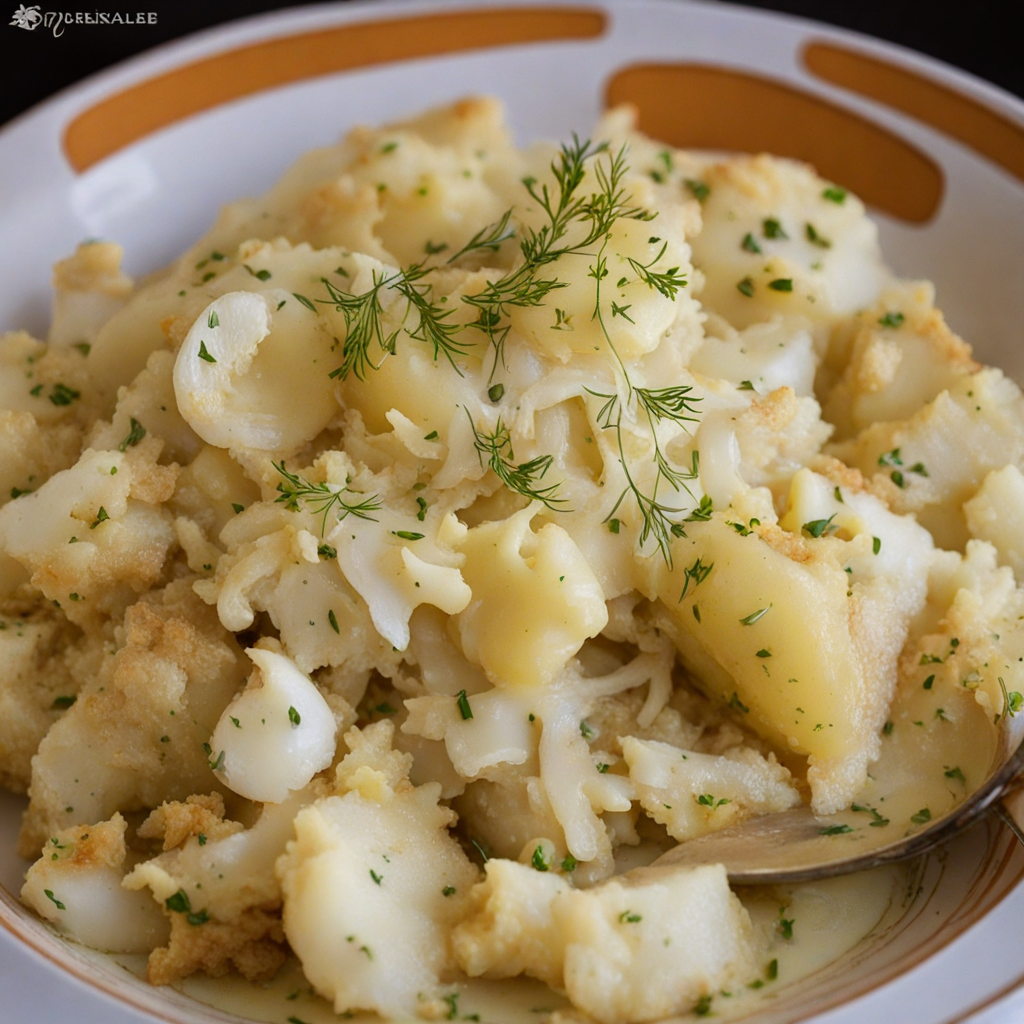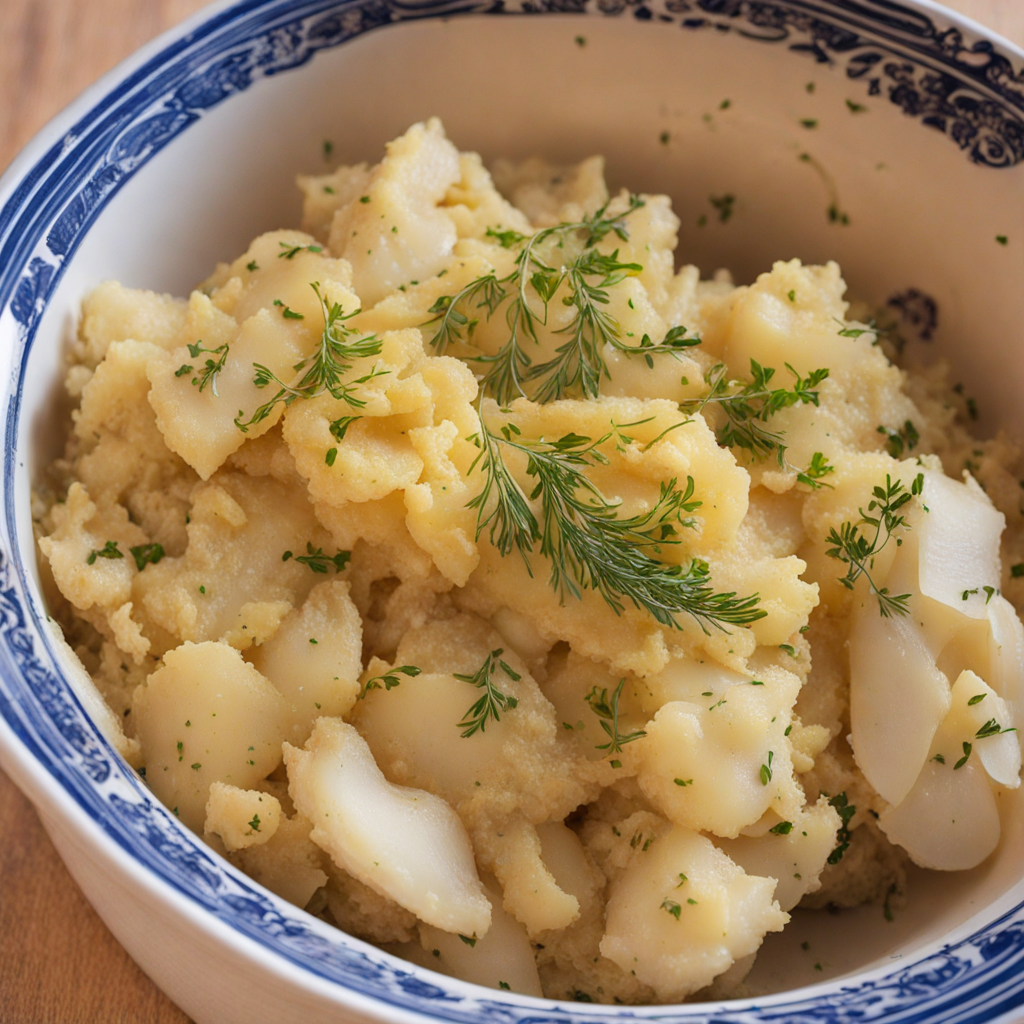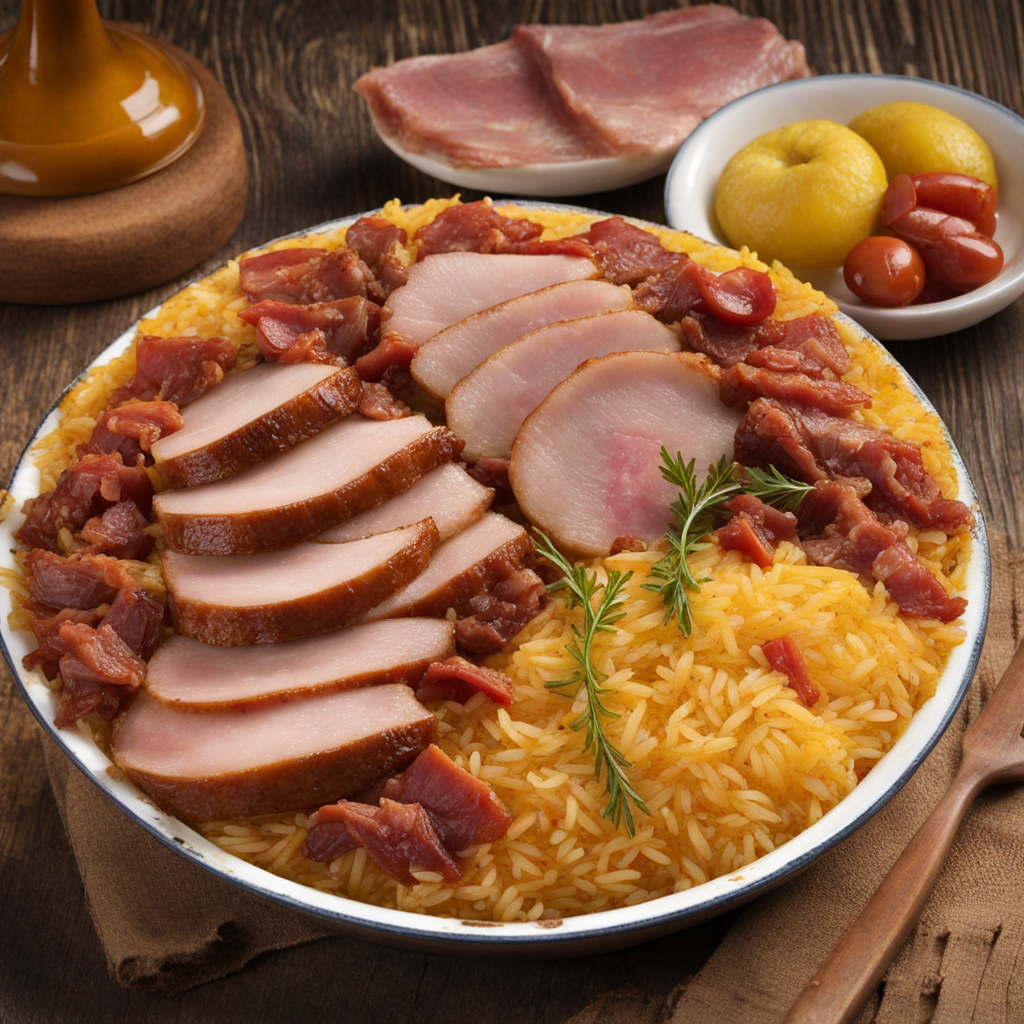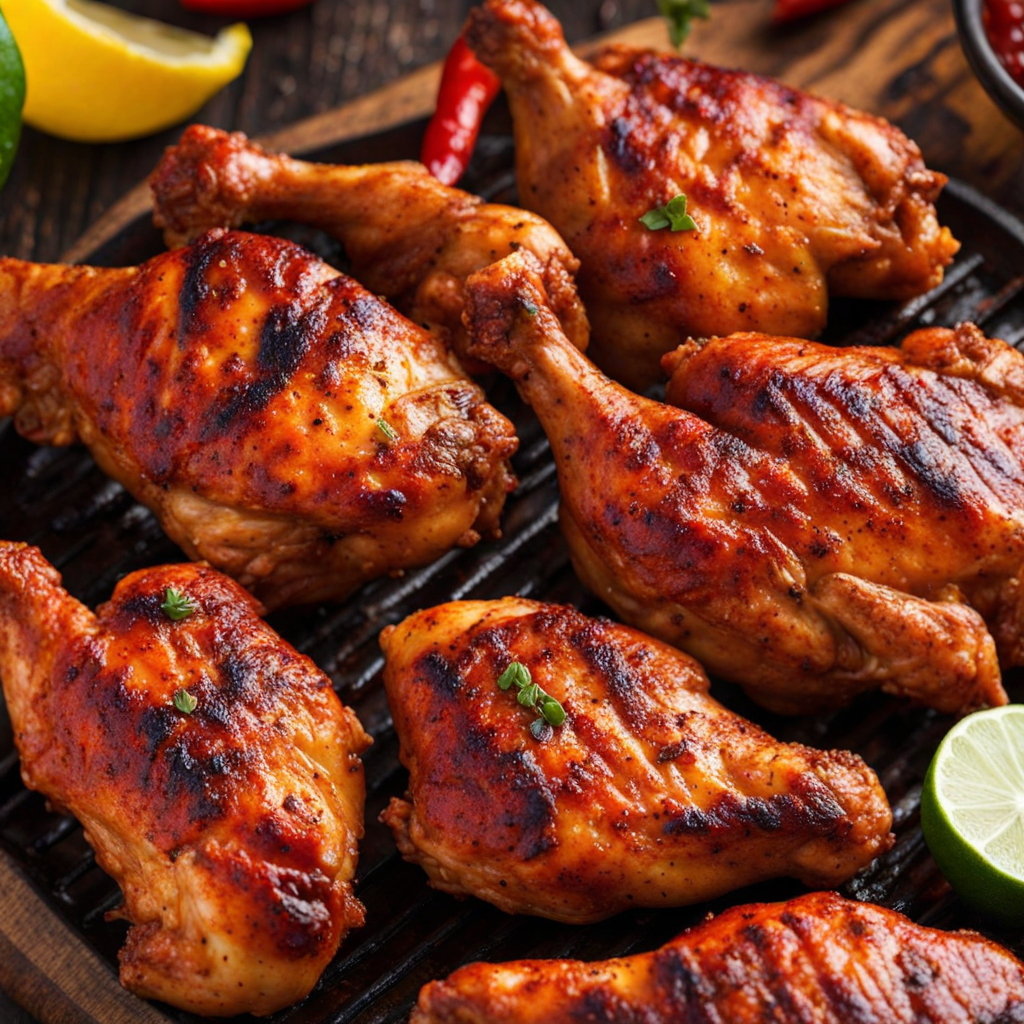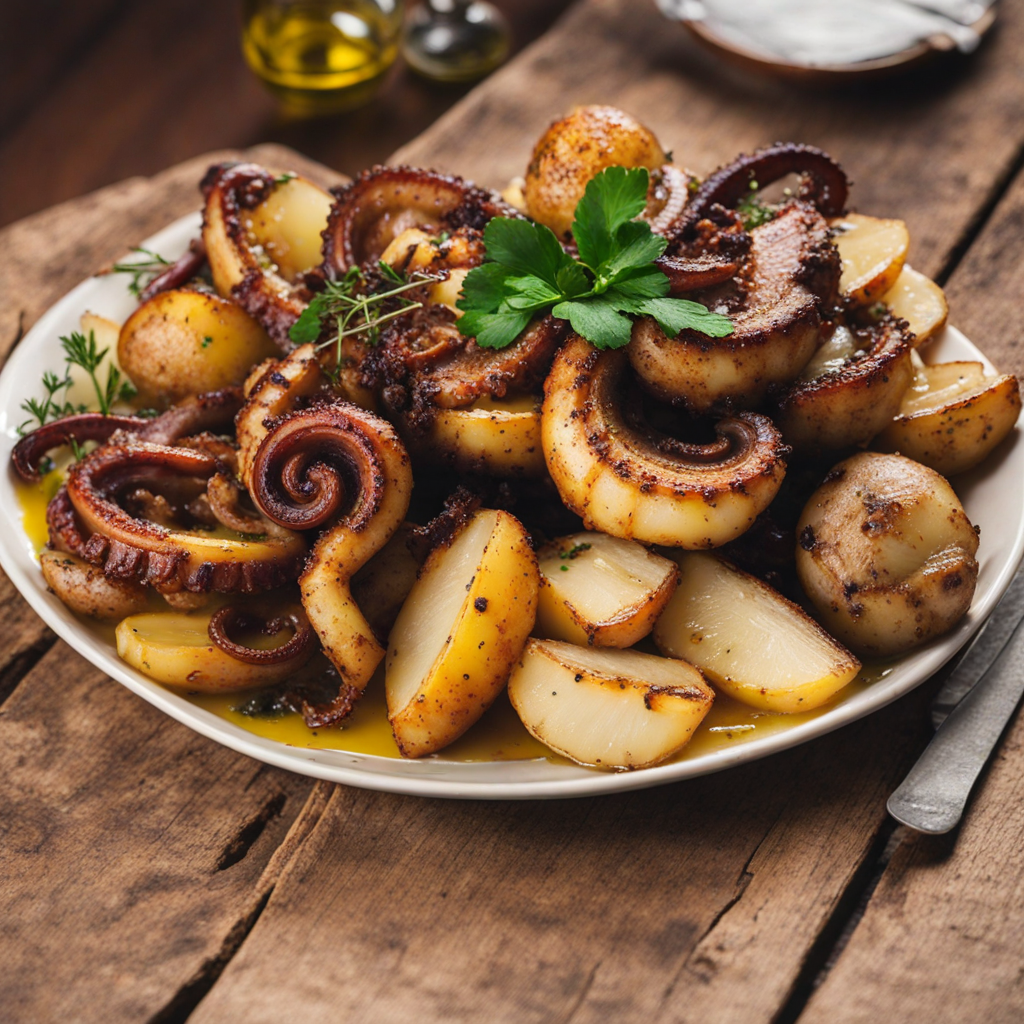Bacalhau à Brás
Bacalhau à Brás is a traditional Portuguese dish that showcases the country's rich culinary heritage, particularly its love for bacalhau, or salted cod. This dish is a delightful blend of finely shredded cod, sautéed onions, and golden crispy potatoes, all bound together with scrambled eggs. The preparation method involves first soaking the salted cod to remove excess salt, then cooking it until tender. The cod is flaked and mixed with sautéed onions, while straw fries or matchstick potatoes provide a satisfying crunch. The final touch is the addition of scrambled eggs, which meld the ingredients into a creamy, comforting dish that is both hearty and satisfying. The flavor profile of Bacalhau à Brás is a beautiful harmony of savory and subtle brininess from the cod, complemented by the sweetness of the onions. The potatoes add a delightful texture, while the eggs create a luscious binding that brings everything together. Garnished with black olives and fresh parsley, the dish not only pleases the palate but also presents an appealing visual feast. Each bite offers a warm, comforting experience that reflects the essence of Portuguese home cooking. What sets Bacalhau à Brás apart is its versatility; it can be served as a main course or as a savory side dish, making it suitable for various occasions. Whether enjoyed in a family gathering or at a festive meal, this dish embodies the spirit of Portuguese cuisine—simple ingredients transformed into something extraordinary. The combination of flavors and textures transports you to the vibrant streets of Portugal, inviting you to savor each bite and discover the rich culinary traditions of this beautiful country.
How It Became This Dish
Bacalhau à Brás: A Culinary Tale of Tradition and Transformation Origins of Bacalhau à Brás Bacalhau à Brás is a beloved Portuguese dish that showcases the country's deep culinary roots and maritime heritage. The origins of bacalhau, or salted cod, date back to the 15th century, when Portuguese fishermen ventured to the icy waters off the coast of Newfoundland and the Arctic. The preservation method of salting and drying fish allowed for long-term storage and made it possible for cod to be transported back to Portugal, where it became a staple in the diet of the nation. The specific dish known as Bacalhau à Brás is thought to have originated in Lisbon, although its precise origins are somewhat nebulous. It is attributed to a man named Brás, who was reputedly a tavern owner in the late 19th century. The story goes that Brás created this dish to utilize the leftover cod, potatoes, and eggs from his kitchen, transforming them into a hearty meal that would appeal to his patrons. The dish quickly gained popularity, becoming a standard offering in Lisbon's taverns and restaurants. Cultural Significance Bacalhau à Brás is much more than just a meal; it is a symbol of Portuguese culture and identity. The dish embodies the essence of Portuguese cuisine, which is characterized by its simplicity, reliance on quality ingredients, and the ability to transform humble components into a satisfying feast. The use of bacalhau reflects Portugal's historical reliance on the sea, while the combination of flavors and textures speaks to the country's culinary creativity. In Portuguese culture, bacalhau is often referred to as "the faithful friend." This saying stems from the fish's versatility and its ability to be prepared in countless ways. Bacalhau à Brás, in particular, is frequently served during important celebrations, such as Christmas Eve dinner, where it carries the weight of tradition and familial bonds. The dish is often shared among family and friends, reinforcing community connections and the importance of shared meals. Ingredients and Preparation At its core, Bacalhau à Brás features a few key ingredients: bacalhau (salted cod), finely shredded potatoes, onions, eggs, and a garnish of black olives and parsley. To prepare the dish, the salted cod is first soaked to remove excess salt and rehydrate the fish. This is followed by boiling, shredding, and sautéing the cod with onions until they become tender and fragrant. The shredded potatoes, typically fried until golden and crispy, are then added to the mixture. Finally, beaten eggs are incorporated, creating a rich and creamy texture that binds the ingredients together. The dish is often garnished with black olives and a sprinkle of fresh parsley, enhancing its visual appeal and adding layers of flavor. The combination of the saltiness of the cod, the earthiness of the potatoes, and the richness of the eggs creates an unforgettable taste experience that resonates with those who enjoy it. Evolution Over Time Bacalhau à Brás has experienced various adaptations and interpretations throughout the years, reflecting changes in Portuguese society and culinary trends. While the traditional recipe remains cherished, contemporary chefs have begun to experiment with the dish, incorporating new ingredients and techniques. For example, some modern variations may include the addition of spices, herbs, or even vegetables to enhance the flavor profile and nutritional value. The rise of the "slow food" movement has also influenced the preparation of Bacalhau à Brás. Chefs and home cooks alike are increasingly interested in sourcing high-quality, sustainable ingredients, which has led to a renewed appreciation for the traditional methods of preparing bacalhau. The emphasis on artisanal production and the preservation of culinary heritage has allowed Bacalhau à Brás to maintain its status as a beloved comfort food while adapting to modern preferences. In recent years, the international popularity of Portuguese cuisine has also contributed to the dish's evolution. As Portuguese restaurants gain traction around the world, variations of Bacalhau à Brás can be found in diverse culinary contexts. In these settings, chefs may infuse local flavors or techniques, creating a fusion of traditional Portuguese elements with contemporary global cuisine. Culinary Pairings and Modern Context Bacalhau à Brás is typically served as a main course, often accompanied by a simple green salad or crusty bread. The dish pairs wonderfully with Portuguese wines, especially white varietals such as Vinho Verde or a full-bodied Alentejo. The acidity and freshness of the wine complement the richness of the dish, heightening the overall dining experience. In the modern context, Bacalhau à Brás is not only a cherished family recipe but also a point of pride for Portuguese restaurants and chefs. Culinary competitions and festivals often feature the dish, with chefs showcasing their unique takes on the classic recipe. Social media has further propelled the dish into the limelight, with food enthusiasts sharing their experiences and interpretations, leading to a renewed interest in traditional Portuguese cuisine among younger generations. Conclusion: A Dish of Resilience and Adaptation Bacalhau à Brás tells the story of Portugal's history, culture, and culinary ingenuity. It is a dish deeply rooted in tradition yet flexible enough to evolve with changing tastes and trends. The journey of bacalhau from the frigid Atlantic waters to the plates of families and restaurants encapsulates the resilience of Portuguese gastronomy. As Bacalhau à Brás continues to be celebrated in Portugal and beyond, it serves as a reminder of the importance of food in our lives—not just as sustenance but as a means of connection, celebration, and cultural expression. Whether enjoyed at a festive gathering or a casual dinner, Bacalhau à Brás remains a dish that honors the past while embracing the future, ensuring its place in the hearts and kitchens of many for generations to come.
You may like
Discover local flavors from Portugal


